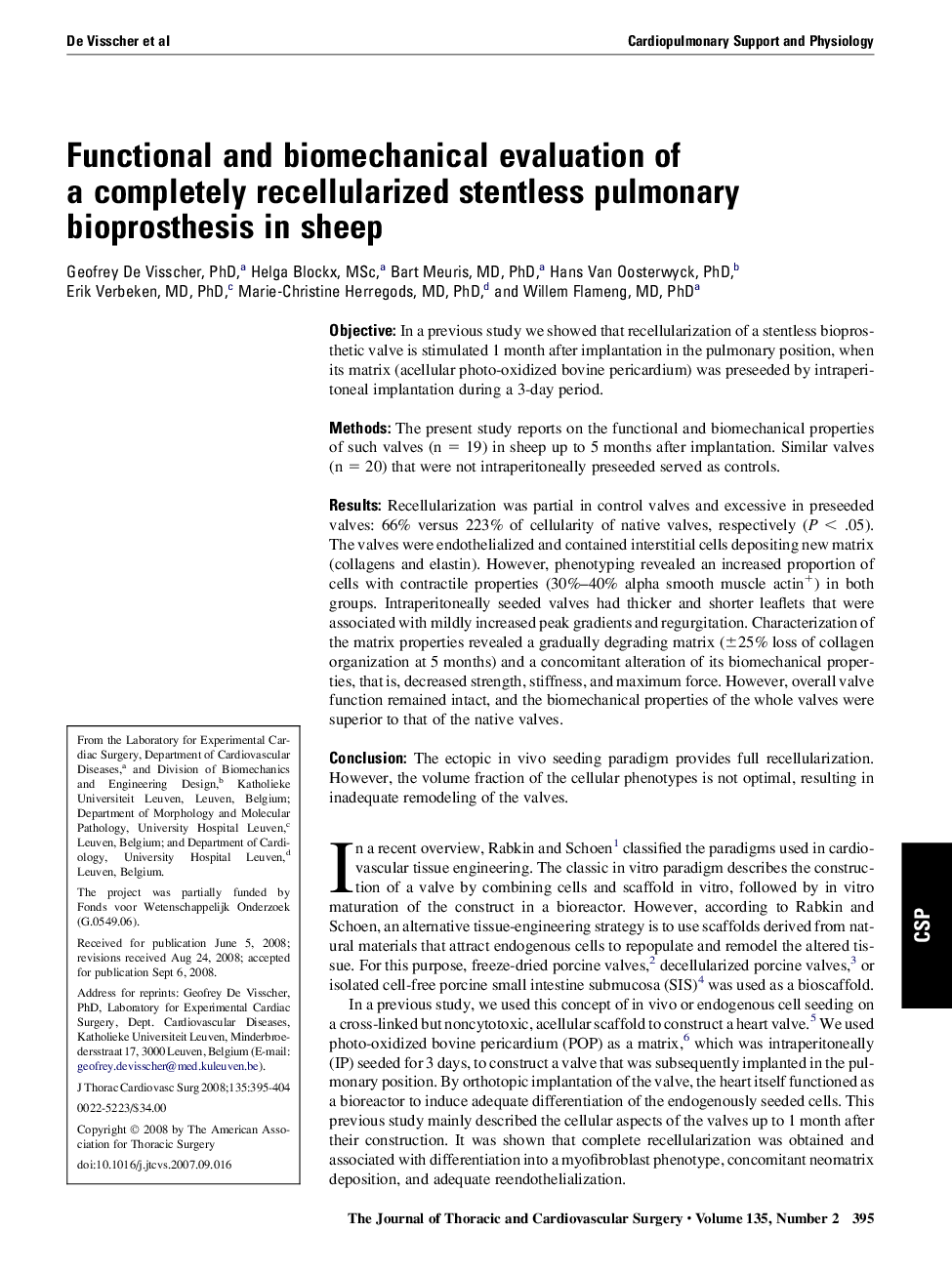| Article ID | Journal | Published Year | Pages | File Type |
|---|---|---|---|---|
| 2986368 | The Journal of Thoracic and Cardiovascular Surgery | 2008 | 10 Pages |
ObjectiveIn a previous study we showed that recellularization of a stentless bioprosthetic valve is stimulated 1 month after implantation in the pulmonary position, when its matrix (acellular photo-oxidized bovine pericardium) was preseeded by intraperitoneal implantation during a 3-day period.MethodsThe present study reports on the functional and biomechanical properties of such valves (n = 19) in sheep up to 5 months after implantation. Similar valves (n = 20) that were not intraperitoneally preseeded served as controls.ResultsRecellularization was partial in control valves and excessive in preseeded valves: 66% versus 223% of cellularity of native valves, respectively (P < .05). The valves were endothelialized and contained interstitial cells depositing new matrix (collagens and elastin). However, phenotyping revealed an increased proportion of cells with contractile properties (30%–40% alpha smooth muscle actin+) in both groups. Intraperitoneally seeded valves had thicker and shorter leaflets that were associated with mildly increased peak gradients and regurgitation. Characterization of the matrix properties revealed a gradually degrading matrix (±25% loss of collagen organization at 5 months) and a concomitant alteration of its biomechanical properties, that is, decreased strength, stiffness, and maximum force. However, overall valve function remained intact, and the biomechanical properties of the whole valves were superior to that of the native valves.ConclusionThe ectopic in vivo seeding paradigm provides full recellularization. However, the volume fraction of the cellular phenotypes is not optimal, resulting in inadequate remodeling of the valves.
